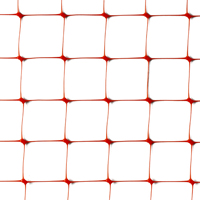Metal decorative mesh can only be used in practice afte […]
Metal decorative mesh can only be used in practice after surface pretreatment. This stage includes grinding, polishing, degreasing and rust removal. Grinding removes burrs, blisters, air bubbles, weld scarves, scratches, corrosion marks, scale, and various macroscopic defects on the surface of the material. Improve surface flatness, reduce roughness, and ensure finishing quality. Grinding is carried out on dry grinding wheels. The grinding wheel is made of bone glue or leather glue as a drying agent, combined with various abrasives.
Non-ferrous metals and their alloys are sometimes polished by mechanical polishing. In order to further reduce the roughness of the coating and improve the gloss and appearance quality of the coating. Mechanically polish the polished green-coated buffing wheel. Its effect and quality depend on the stiffness of the grinding wheel and the circumferential speed of the wheel. Polished greens consist of fine particles made from various oils and auxiliary materials and are available in three shades of white, red and green.

The white polished green primary abrasive is a round, finely powdered calcium oxide with no sharp edge surfaces. It is suitable for polishing soft metals such as nickel, aluminum, copper and its alloys, as well as fine polishing of low-roughness material surfaces.
The main abrasives of red polishing green are medium hardness iron oxide and feldspar fine powder. Suitable for polishing steel products. The main abrasive of green polishing green is hard and sharp chromium oxide green fine powder, which is suitable for polishing of chromium, stainless steel, hard alloy steel and other materials.
Chemical etching process under specific conditions for chemical polishing of metal products. The results show that the dissolution rate of the micro-convex on the metal surface is much larger than that of the micro-concave, and the result gradually tends to be stable, forming a smooth and bright surface. It is suitable for surface polishing of steel, iron, copper, aluminum, nickel, zinc, rich and other metal products and their alloys.



 WhatsApp:+8613626888261
WhatsApp:+8613626888261